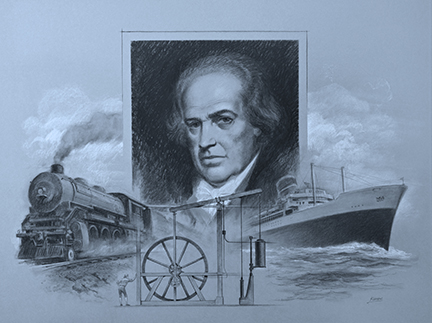Galileo Galilei
(1564 – 1642)

Jack Kamen Artwork
Galileo Galilei, was an Italian philosopher and astronomer. His many contributions to science include describing inertia and determining the strength of materials. Galileo made improvements to the telescope, enabling him to discover the four biggest moons of Jupiter and the rings of Saturn. He also pioneered the use of the scientific method.
New Theories Opposed
Galileo studied and wrote about Copernicus’ theory that the planets revolve around the sun. At that time the Roman Catholic Church, which had a role in government, felt anyone who believed this theory was committing the crime of heresy. The Church held fast to the old theory that the sun revolved around the earth. As a result, Galileo was convicted of a “strong suspicion of heresy”, his book was banned and he spent the remainder of his life under house arrest.
Explore Additional Portraits in the Collection
These portraits were commissioned by Dean Kamen for the SEE Science Center. The artist is Jack Kamen (1920-2008), an American graphic artist and Dean’s father. The series was created to inspire children through the stories of scientists and engineers whose work changed the world. While many of the pieces represent men, the duo worked hard to identify female scientists. Had Jack not passed, their goal was to continue to increase representation within the collection. The original artwork is on display at the SEE Science Center in the Jack Kamen Portrait Gallery.



